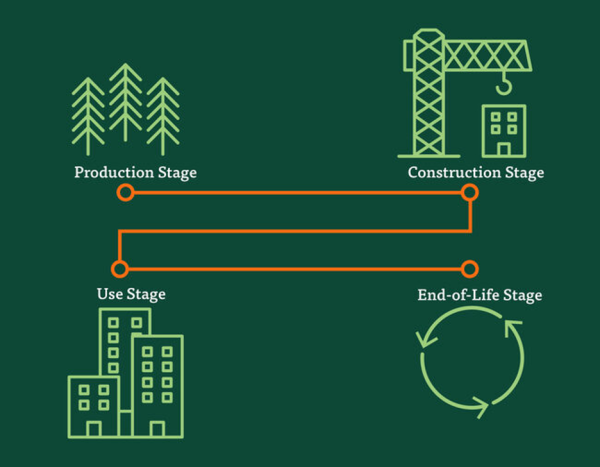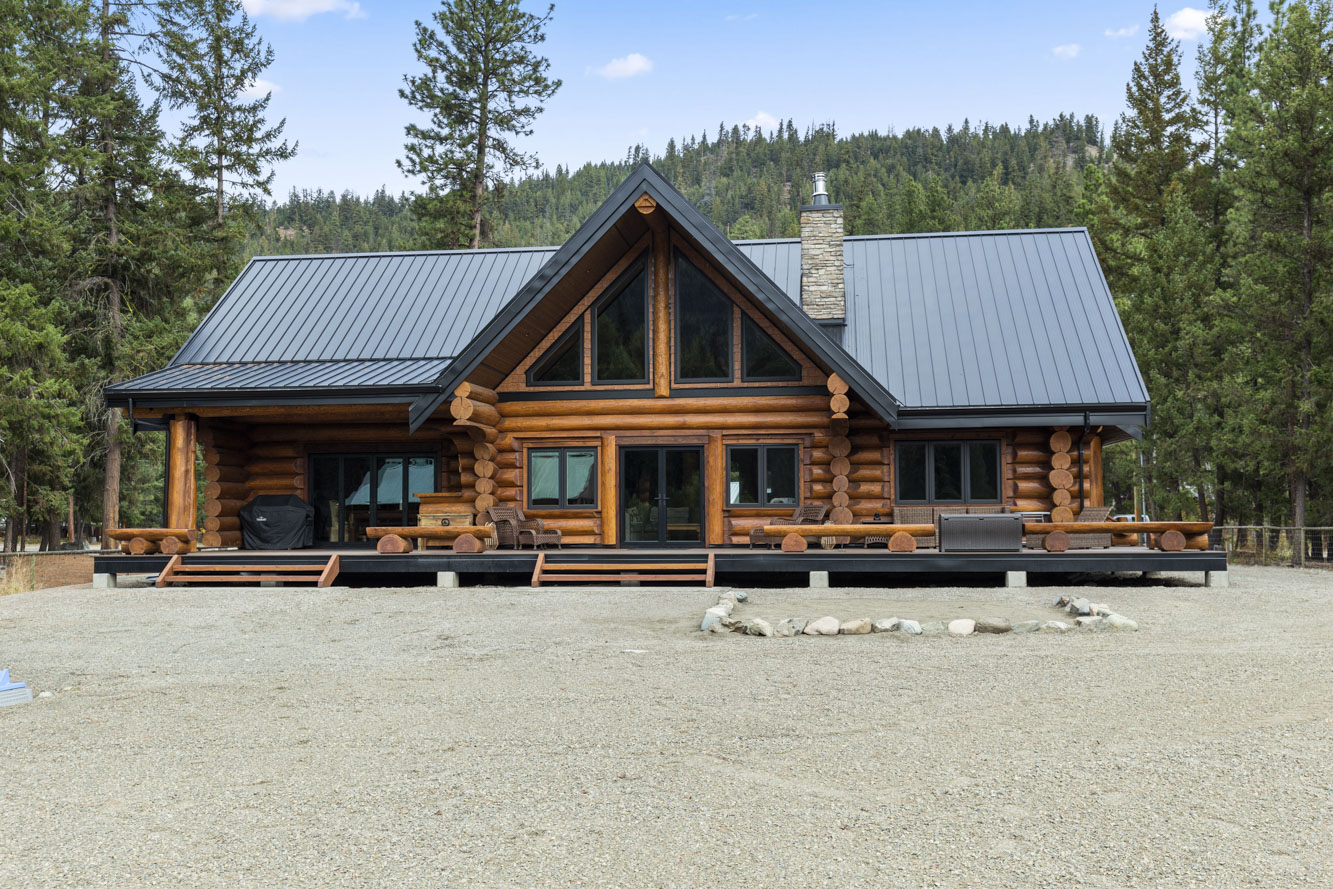Did you know “wood is the only 100% renewable resource in the manufacturing of building products?”
In an age where sustainability is becoming increasingly crucial, the allure of log homes is experiencing a renaissance. Nestled amidst verdant landscapes or standing proudly against a backdrop of snow-capped mountains, these structures evoke a sense of harmony with nature. However, beyond their rustic charm, log homes hold significant potential in the realm of sustainable living.
Harnessing Renewable Resources
At the heart of sustainability lies the principle of utilizing renewable resources. Log homes excel in this aspect, as they are primarily constructed from one of the Earth’s oldest building materials: wood. Sourced from responsibly managed forests, the logs used in these homes are a renewable and abundant resource. Unlike materials such as concrete or steel, which require substantial energy for production, wood has a significantly lower carbon footprint.
What does it mean when we say significantly lower? “Concrete produces almost two times more solid waste by-product than wood, and wood produces 50% less greenhouse gas emissions than concrete and 26% less than manufactured steel.” Whereas wood comes out as clean and environmentally responsible as possible.
Fortunately for us, wood is in abundance – Canada harvests less than ¼ of 1% of its forest area each year. B.C. plants 3 seedlings for every tree harvested. Comparatively speaking Canada harvests “four times less (proportionally) than the five largest European forest nations combined”.
Carbon Sequestration and Eco-Friendly Building
One of the most compelling aspects of log homes is their ability to sequester carbon dioxide. “Trees naturally absorb carbon dioxide from the atmosphere as they grow”, and this carbon remains stored within the wood even after it’s harvested and processed into logs. By choosing to build with logs, homeowners are effectively locking away carbon, mitigating their environmental impact.
Moreover, the construction process itself tends to be less energy-intensive compared to traditional building methods. Log homes often require minimal processing of materials, reducing the energy and emissions associated with manufacturing. Additionally, the thermal properties of wood contribute to better insulation, leading to lower energy consumption for heating and cooling—a win-win for both the environment and homeowners’ wallets.

The Carbon Cycle
What is the carbon cycle? Carbon is the chemical backbone of all life on Earth. This is a fundamental process that describes the movement of carbon through various reservoirs on Earth. It encompasses both natural and human-induced processes and plays a crucial role in regulating the planet’s climate and supporting life. Understanding this specific life cycle of carbon in wood construction is essential for assessing its environmental impact accurately.
The carbon cycle can be divided into several interconnected stages:
- Tree Growth: Trees absorb carbon dioxide (CO2) from the atmosphere during photosynthesis, using sunlight to convert CO2 and water into carbohydrates (such as cellulose, hemicellulose, and lignin), which make up the wood. This process sequesters carbon, removing it from the atmosphere and storing it in the tree’s biomass.
- Harvesting: Once mature, trees are harvested for wood products. Sustainable forestry practices ensure that new trees are planted to replace those harvested, maintaining a cycle of carbon sequestration.
- Manufacturing: Wood is processed into various products such as lumber, plywood, or engineered wood products like laminated veneer lumber (LVL) or cross-laminated timber (CLT). Energy is typically used in manufacturing processes, releasing some carbon emissions.
The Benefits of Building with Wood
Building with logs offers a multitude of environmental benefits such as:
- Renewability: Wood is a renewable resource, unlike finite materials such as concrete or steel. Responsible forestry practices ensure that for every tree harvested, several more are planted, maintaining a sustainable cycle of growth and harvest.
- Energy Efficiency: Logs possess natural insulation properties, providing superior thermal performance compared to traditional building materials. This inherent efficiency reduces the need for excessive heating and cooling, consequently lowering energy consumption and associated carbon emissions over the lifetime of the home.
- Low Embodied Energy: The energy required to process and manufacture logs into building materials is significantly lower compared to that of concrete or steel. This results in a lower embodied energy—the total energy consumed throughout a material’s life cycle—further reducing the carbon footprint of log homes.
- Biodegradability: At the end of their lifespan, log homes can be easily recycled or left to biodegrade naturally without leaving behind harmful residues or toxins, unlike some synthetic building materials.
Aesthetic and Psychological Benefits
Beyond their environmental advantages, log homes resonate with a primal connection to nature that many find deeply appealing. The warmth and character of wood evoke a sense of tranquility and well-being, fostering a harmonious relationship with the surrounding environment. Studies have shown that exposure to natural materials like wood can reduce stress levels and enhance overall mental health, further underscoring the holistic benefits of log home living.
Challenges and Considerations
While log homes offer numerous advantages in terms of sustainability, they are not without challenges. Properly sourcing logs from sustainably managed forests is paramount to ensure the long-term viability of this building practice. Additionally, careful attention must be paid to the design and construction process to optimize energy efficiency and minimize waste.
Furthermore, maintenance is key to preserving the integrity of a log home. Regular inspections and treatments are necessary to protect against moisture, pests, and decay, ensuring that the structure remains sound for years to come.
Conclusion: Cultivating a Sustainable Legacy
In an era defined by the urgency of climate action, the choice of building materials carries profound implications for future generations. Log homes represent more than just architectural relics of the past; they embody a sustainable ethos rooted in the responsible stewardship of our planet’s resources.
By harnessing the natural beauty and resilience of wood, log home enthusiasts are not only crafting timeless retreats but also nurturing a sustainable legacy for generations to come. As we navigate the complexities of a rapidly changing world, the enduring allure of log homes serves as a poignant reminder of our interconnectedness with nature and the enduring power of sustainable living.
Sources
- https://www.ncbi.nlm.nih.gov/pmc/articles/PMC8125471/
- https://oceanservice.noaa.gov/facts/carbon-cycle.html#transcript
- https://www.woodworks.org/why-wood/sustainability/
- https://tealjones.com/sustainability/


